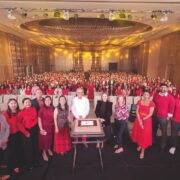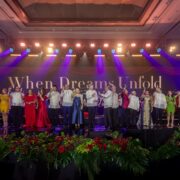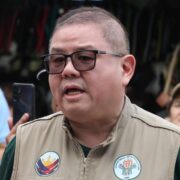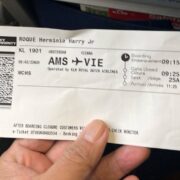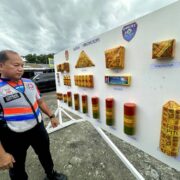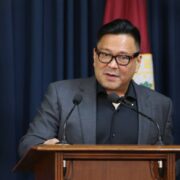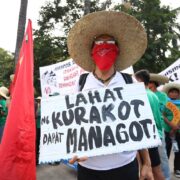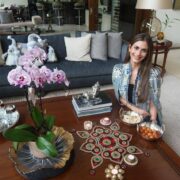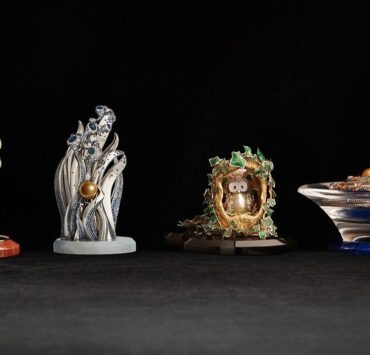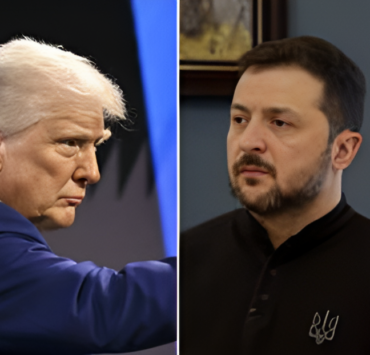9 migrant artists take inspiration from Nena Saguil
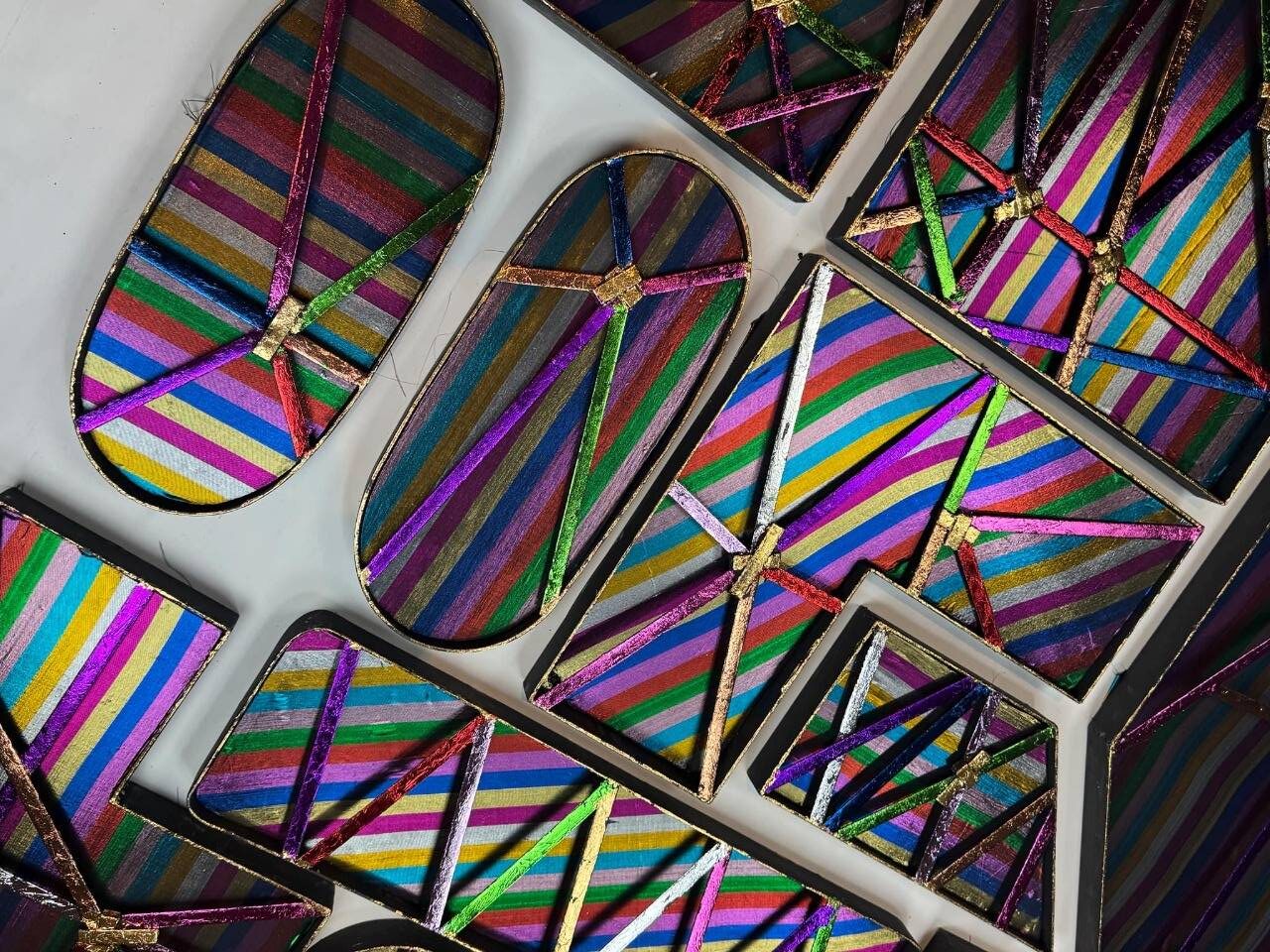
Back when she was living in Paris, Filipina modernist Nena Saguil spent much of her time doing menial work so she could continue living there as an artist. Different time, different frame, but the story sounds the same.
Most Filipinos rooted in the country know someone who has settled abroad—either by choice or circumstance—with millions scattered over 200 countries as part of the diaspora.
Linked by their mutual fates of having to leave their roots, Filipino artists Racso Jugarap, Jana Benitez, Jaclyn Reyes, Rose Cameron, Kim Cruz, Marissa Gonzalez, Lizza May David, Wayne Forte, and Kulay Labitigan took inspiration from Saguil in “Lakbay: Voyages into the Absolute with Nena Saguil.”
“Like Saguil, our artists tonight remind us of how the Filipino spirit transcends borders, always seeking, always evolving, always returning,” said art patron Maritess Pineda at the opening of “Lakbay” at Discovery Primea on Feb. 8.
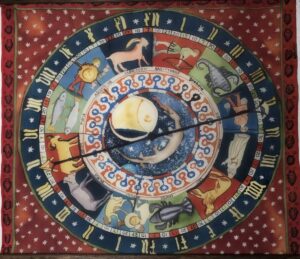
This homecoming of sorts, presented by Art House, brings to the fore the unique experiences of these artists as migrant Filipino creatives.
“The journey for every Filipino living abroad, home yet away from home, is not an easy one. As a Filipino artist who lived in Paris, Nena Saguil’s life and times were an embodiment of the Philippine diaspora and how it influences creativity,” said Art House founder and CEO Carlo Pineda.
Quoting Saguil, he continued: “Your roots will always be expressed in everything you do. The Filipino in the artist will always show up in his work.
“Through the art showcase in ‘Lakbay,’ we hope to bring audiences a sense of home and connectedness to their Filipino roots,” he added, emphasizing that Art House is neither a gallery nor an art team, but a “platform built for Filipino talent across creative genres.”
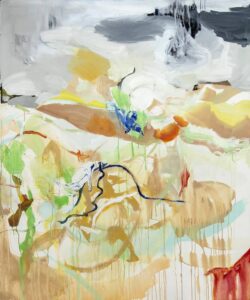
‘Refreshing, resonant’
He added, “We endeavor to create a platform based on the credence that the Philippines has got talent. It may sound clichéd, but it’s true.”
With the intention of bringing something “refreshing yet resonant” to the local art scene, “Lakbay” put some of Saguil’s works side by side with the guest artists’ own interpretations.
The four-day exhibit featured artists from the United States, the United Kingdom, Germany, Switzerland, and Belgium—chosen from ones curator Marika Constantino and Carlo have worked with, along with some on the latter’s wish list.
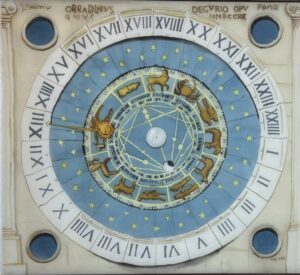
Much like Saguil, New York-born Benitez’s instinctive approach to art reveals her attempt at understanding the human experience, its spirituality and connection to our inner selves. Filipino-American Cameron moved to the US at 12 years old. She feels a kinship with Saguil due to their parallel routes, saying in a statement, “As a Filipina immersed in a foreign culture, Nena Saguil could have felt lost, uncertain, or disconnected. Yet, she chose to embrace her new reality, learning from it without ever losing her roots or her sense of self.”
Founder of Kalma Art Foundation, artist and art therapist Cruz from the US shares Saguil’s sense of adventure, daring to push past her comfort zone. Relating to the late artist’s earlier monochromatic works, Cruz experimented with ink and charcoal to create dynamic, dramatic, yet ephemeral images in white, black, and gray.
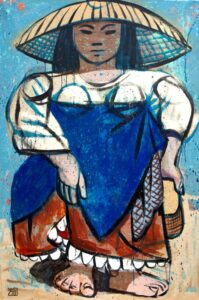
Relatable
California-based Forte’s more figurative style explores themes of spirituality, identity, and heritage that may not immediately seem connected to Saguil’s abstractionism, but he revealed that they were both trained in the Modernist tradition.
According to Forte, Saguil’s relocation felt relatable. “‘Longing’ is a good word for what we have in common,” he said in a statement.
Born in California, Reyes focuses on participatory arts-based methods, diaspora, and belonging, working extensively with Filipino communities. Taking inspiration from the most recurring shape in Saguil’s works, she uses the roundness of the phases of the moon as a “map” of her relationship with the Philippines, charting her spiritual journey as well as serving as a visual glossary of her various experiences.
David from Germany shares works from years back that relate to Saguil, with the migration of the paintings becoming part of the work. The introspective nature of her art was part of her reaction to being exoticized as a Filipina abroad.
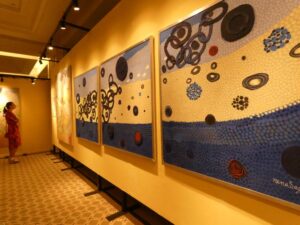
Marissa Gonzalez, from Switzerland, shares Saguil’s thirst for knowledge, having taken up classes in photography, silk painting, watercolor techniques, folk art painting on wood, and currently, stained-glass techniques. She explores heritage and memory through her paintings in jusi, the delicate Filipino fabric woven from pineapple fibers.
Filipino-Belgian wire artist Jagarap admires Saguil’s ability to “stay rooted in her identity while exploring new ideas,” reminding him of his own journey. “What resonates with me is her courage to carve her own path and explore abstraction at a time when it was not widely embraced in Philippine art.”
The sculptor’s “Chimera” series, named after the mythical creature that bore parts from different animals, serves as a visual and symbolic map of the path he has traveled, “living many different lives before finding my path in art.”
“The delicate, almost fragile forms of “Chimera” show resilience, too, standing strong despite their intricate, complex nature. It is a reminder that we can grow, adapt, and thrive, no matter where we start or how winding the road may be. This series is about transformation, embracing your many sides, and finding beauty in the journey,” he added in a statement.
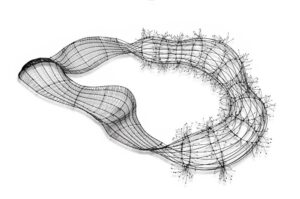
‘Balikbayan’ box assemblage
London-based Kulay Labitigan’s “Kamada” is a nod to Saguil’s approach toward art. Meaning to “pile, stack, or organize,” Labitigan starts off with small units to paint a larger picture: The 12-piece assemblage represents the 12 months of the year throughout which migrant Filipinos slowly fill an empty box to send back home.
“Most are unaware that a balikbayan box is a collection of heaviness, weariness, and longing that is wrapped with love and comfort. ‘Kamada’ is a four-cornered beating heart, full of sorrow but also full of joy,” he explained in a statement.
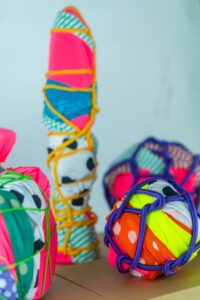
Leading to the exhibit, another work by Labitigan was on display. The installation titled “7,642nd Island” reflects the “imaginary time and spacial zones” that Filipinos in the diaspora inhabit as they connect with loved ones back home through video calls, send wire transfers to pay bills, and create memories with voice memos.
The multitude of colorfully wrapped objects in their mini balikbayan boxes are loaded with the idea of home, collectively creating a massive cluster of vibrant patterns and forms.
According to Carlo, the exhibit is just the beginning as Art House envisions “Lakbay” as a concept that will continue to evolve and find new forms and experiences, including culinary and public art.

